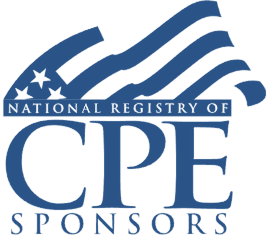- videocam On-Demand Webinar
- signal_cellular_alt Intermediate
- card_travel Tax Law
- schedule 90 minutes
Subpart F and PFIC Regulations for U.S. Investors and Domestic Funds
Calculating Subpart F and PFIC Inclusions, Partner-Level PFIC Elections, IRC Sec. 1248, CFC and PFIC Overlap Rules
Welcome! Save 30% on all CLE, CPE, and Professional Skills webinars, plus 15% off any annual pass with code HOLIDAY25
About the Course
Introduction
This CLE/CPE course will provide tax counsel and advisers guidance for calculating Subpart F and passive foreign investment company (PFIC) inclusions and final tax rules and regulations. The panel will discuss key provisions of the final rules, the impact on U.S. investors who own interests in foreign corporations through domestic partnerships, changes to Subpart F inclusion rules, partner-level PFIC elections, IRC Sec. 1248 treatment of domestic partnerships, controlled foreign corporation (CFC) and PFIC overlap rules, and other key issues.
Description
The Subpart F rules and PFIC regime imposes a set of U.S. tax rules among the most onerous in all of the Internal Revenue Code. The U.S. Treasury and IRS issued final regulations significantly impacting the calculations of Subpart F and PFIC inclusions by U.S. investors who own interests in foreign corporations through domestic partnerships.
Pass-through entities are treated either as separate from their owners or as an aggregate of their owners under U.S. tax law. If separate entity treatment applies, the tax implications of items flow into the partnership and are determined at the partnership level and then allocated to the partners. If aggregate treatment applies, partners take into account pro rata shares of the affected tax item rather than a distributive share of the item. The final regulations provide for aggregate treatment for GILTI, Subpart F, and Section 956 inclusions.
The PFIC rules expose U.S. taxpayers owning stock in PFICs to an ordinary income and accrued interest regime that is complicated and expensive. The regulations provide for (1) aggregate treatment for purposes of determining the controlling domestic shareholder; (2) adoption of an aggregate approach to inclusions; and (3) clarification of the application of the CFC overlap rule for domestic partnerships and pass-through entities.
Listen as our panel discusses key provisions of the final rules, the impact on U.S. investors who own interests in foreign corporations through domestic partnerships, Subpart F inclusion rules, partner-level PFIC elections, IRC Sec. 1248 treatment of domestic partnerships, CFC and PFIC overlap rules, and other key issues.
Presented By

Ms. Axler advises on a broad variety of domestic and international tax matters. Prior to joining Fenwick, she was an associate in an Israeli office of one of the big-four accounting firms where she advised on international tax considerations for multinational clients.

Mr. Diosdi is an experienced trial lawyer who regularly defends individuals and corporations in matters involving tax controversies and government regulatory enforcement. He also has vast experience assisting clients who find themselves with unreported or undeclared bank accounts outside the U.S. Mr. Diosdi is acknowledged as one of the nation’s leading experts in contesting penalties associated with failing to file FBARs. In addition to representing clients in tax controversy matters, he advises clients on U.S. international tax matters, including tax planning with respect to their structures and transactions. In particular, Mr. Diosdi has experience advising on issues relating to tax treaties, pre-immigration planning for foreigners moving to the U.S., expatriation planning, tax planning for foreign companies doing business in the U.S., and subpart F income minimization. More recently, he has focused on helping clients navigate U.S. tax reform, including the regimes for Global Intangible Low-Taxed Income and Foreign-Derived Intangible Income, and the new limitations on foreign tax credits.
-
This 90-minute webinar is eligible in most states for 1.5 CLE credits.
-
CPE credit is not available on recordings.
-
BARBRI is a NASBA CPE sponsor and this 90-minute webinar is accredited for 1.5 CPE credits.
-
BARBRI is an IRS-approved continuing education provider offering certified courses for Enrolled Agents (EA) and Tax Return Preparers (RTRP).
-
Live Online
On Demand
Date + Time
- event
Friday, November 15, 2024
- schedule
1:00 p.m. ET./10:00 a.m. PT
- Subpart F regulations
- Key components of Subpart F anti-deferral regime
- Determining Subpart F income
- Reporting Subpart F income on Form 5471
- Best practices for ensuring accurate reporting of Subpart F income
- PFIC regulations
- PFIC treatment, purging, and deemed distribution rules
- Reporting requirements and inclusions
- Main issues and pitfalls to avoid in reporting and preparing required tax forms
The panel will review these and other key issues:
- What are the tax compliance challenges for U.S. persons owning CFCs?
- What are the key provisions and challenges of the Subpart F and PFIC rules?
- What are the challenges in determining and calculating Subpart F and PFIC income?
- What are the main issues and pitfalls to avoid in reporting and preparing the required tax forms?
Learning Objectives
After completing this course, you will be able to:
- Determine how the definition of U.S. shareholders subject to tax on previously deferred foreign-source income has changed
- Distinguish the tax provisions under Subpart F from the GILTI provisions
- Recognize key issues stemming from final Subpart F regulations
- Ascertain whether income is Subpart F income and the tax consequences of classifying income as Subpart F
- Recognize key issues and challenges of the PFIC regulations
- Determine scenarios in which to make a QEF election
- Identify the elections necessary to make a QEF election in a year subsequent to asset acquisition
- Discern whether a mark-to-market election would be available and might be advised
- Recognize the current year tax impact of elections to remove PFIC taint from foreign investments
- Field of Study: Taxes
- Level of Knowledge: Intermediate
- Advance Preparation: None
- Teaching Method: Seminar/Lecture
- Delivery Method: Group-Internet (via computer)
- Attendance Monitoring Method: Attendance is monitored electronically via a participant's PIN and through a series of attendance verification prompts displayed throughout the program
- Prerequisite: Three years+ business or public firm experience at mid-level within the organization, preparing complex tax forms and schedules; supervisory authority over other preparers/accountants. Knowledge and understanding of passive foreign investment company (PFIC) rules, including taxation of PFICs and filing requirements, and Subpart F rules; familiarity with IRS Form 8621.

BARBRI, Inc. is registered with the National Association of State Boards of Accountancy (NASBA) as a sponsor of continuing professional education on the National Registry of CPE Sponsors. State boards of Accountancy have final authority on the acceptance of individual courses for CPE Credits. Complaints regarding registered sponsons may be submitted to NASBA through its website: www.nasbaregistry.org.

BARBRI is an IRS-approved continuing education provider offering certified courses for Enrolled Agents (EA) and Tax Return Preparers (RTRP).

BARBRI CE webinars-powered by Barbri-are backed by our 100% unconditional money-back guarantee: If you are not satisfied with any of our products, simply let us know and get a full refund. Contact us at 1-800-926-7926 .
Unlimited access to premium CLE courses:
- Annual access
- Available live and on-demand
- Best for attorneys and legal professionals
Unlimited access to premium CPE courses.:
- Annual access
- Available live and on-demand
- Best for CPAs and tax professionals
Unlimited access to premium CLE, CPE, Professional Skills and Practice-Ready courses.:
- Annual access
- Available live and on-demand
- Best for legal, accounting, and tax professionals
Unlimited access to Professional Skills and Practice-Ready courses:
- Annual access
- Available on-demand
- Best for new attorneys
Related Courses
Recommended Resources

How CPE Can Bridge the Gap Between What You Know and What You Need to Know
- Career Advancement

Gain a Competitive Edge Through Efficient CPE Strategies
- Learning & Development
- Business & Professional Skills
- Career Advancement


